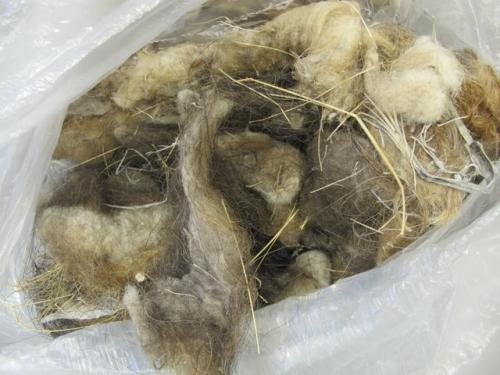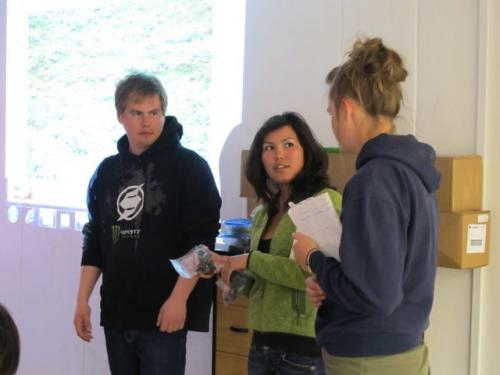Our group proposed the question of where musk ox tend to concentrate and what factors play a role in their choice of location. The hypothesis we proposed was that the musk ox would tend to locate themselves around a main source of water, such as a lake or river, and that they would also situate themselves around lush vegetation with a high water content. For our methodology we selected a variety of environments from the map of the surrounding area. Then at each location we would attempt to look for signs of musk ox, whether that was qiviut, bones, tracks or fecal matter. At each location we would take samples of water and vegetation samples so we could run water quality tests and plant identification tests in hopes of recognizing common patters between the areas where evidence of musk ox was prominent and the areas where musk ox evidence was scarce. The data we collected showed a commonality of grasses and, for the most part, willow being present in the fauna patterns. In the water samples, we found consistently low Nitrite and Phosphate levels. Data with higher accuracy could have been achieved; however, time restraints did not allow for more extensive time in the field. Even so, this research did provide a base for musk ox research.
Research questions
Where do musk ox tend to concentrate?
What factors play a role in their location?
Group members
Taylor Estabrooks (USA)
Kurt Olsen (Greenland)
Sofie Abelsen (Greenland)
Hypothesis and predictions
The musk ox will tend to concentrate around a lake area for water.
They will also concentrate around more lush plants with high water contents.
Methodology
Select a variety of environments on map.
At each location, look for signs of musk ox (fur, tracks, sightings, waste, bones)

At each location, record air and water temperatures, collect representative plant and water samples.
At lab, identify plants and test water for pH, nitrate, nitrites, ammonium, phosphate.
Look for geographical distribution trends.
Data/Results



Comments